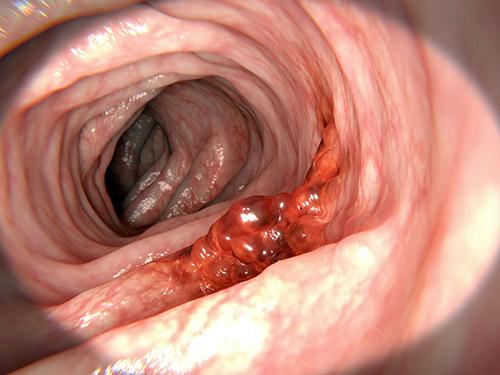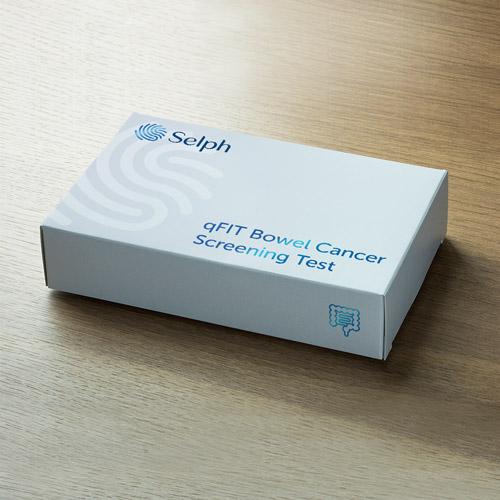What is a positive qFIT test result?
Key Article Takeaways
- A qFIT test picks up blood in the stool, which can be a sign of bowel cancer.
- A positive qFIT test result does not mean you have bowel cancer as there are many other causes of bleeding in the bowel.
- The level of blood in the stool that’s considered “positive” can vary depending on why you’re taking the test and even what country you’re in.
- At Selph, we report any qFIT test which detects blood as “positive”.
The quantitative faecal immunochemical test (qFIT) is a quick and easy test to find out if you’re at higher risk of having bowel cancer.The qFIT test can pick up microscopic amounts of blood in your stool which can be a sign of bowel cancer. A qFIT test is usually interpreted as being “negative” or “positive”. But what does it mean if you have a positive qFIT test? Let’s look at how the qFIT test works, what a positive result means and what you need to do if you get a positive result.
How does a qFIT test work?
The qFIT test works by detecting hemoglobin in the stool. Haemoglobin is the protein that carries oxygen in our red blood cells. So, if you have haemoglobin in your stool, it means that there has been bleeding somewhere along the bowel. The qFIT test specifically detects the globin part of human hemoglobin. This is important because it means that it usually only picks up blood that has come from the lower part of the bowel (the large intestines and the rectum). This is because blood from the upper part of the gut (the stomach and the small intestines) is mostly broken down before reaching the large bowel and won’t be detected by the qFIT test. Bowel cancer nearly always occurs in the lower part of the bowel so this is exactly what we want for a test that’s indicating bowel cancer risk.
A qFIT test detects blood in the stool which can be a sign of bowel cancer.
As the name suggests, the qFIT is a quantitative test. This means that it gives you a number, rather than a “positive” or “negative” result. The number here is the amount of globin per gram of stool. However, whoever is doing the qFIT test for you will usually interpret the number as either “positive” or “negative”. This interpretation of the qFIT result as negative or positive can depend on how high the number is and whether or not you have some specific signs and symptoms.
What does a positive qFIT test mean?
In general, a “positive” qFIT test result simply means there is blood in your stool. However, a positive qFIT test does not tell us the exact cause or location of the bleeding. A positive qFIT test means that you’re at higher risk of having bowel cancer as this is one of the possible causes of bleeding in the bowel. But bowel cancer is certainly not the commonest cause of having blood in the stool and the vast majority of people with a positive qFIT test do not have bowel cancer. Ultimately, you may need to have further investigation, with a camera test (colonoscopy) or scan, to find out what caused the bleeding.
What is a positive qFIT test?
So, we’ve said a positive qFIT test means that you have blood in your stool. But how much blood counts as “positive”? This actually depends on who interprets your qFIT result, why you were getting tested and even what country you’re testing in.
For example, in England, a hemoglobin level of 120µg/g and above is considered positive if you’re being tested as part of the National Bowel Cancer Screening Programme. The assumption here is that you don’t have any symptoms and are just testing for screening purposes.
If you have symptoms that are associated with bowel cancer and are testing via your GP, the threshold for a positive result is much lower at 10µg/g. These symptoms include:
- Unexplained weight loss
- Change in bowel habits (stool consistency or the frequency of emptying your bowels)
- Stomach pain
- Bleeding from the bottom
The higher the amount of blood in the stool, the higher the chance that bowel cancer is the cause. The reason for the difference in thresholds between people who are being tested for screening versus those being tested with symptoms is that people with symptoms are more likely to have bowel cancer in the first place. In this context, even a small amount of blood in the stool should be treated as suspicious. In contrast, if you have no symptoms, then a small amount of blood in the stool is more likely to be caused by something like piles or a fissure.
Although this makes sense, the positive threshold of 120µg/g used in the Bowel Cancer Screening Programme is far too high. It’s estimated that having such a high threshold misses half of the cancers present at the time of screening1. In other countries, such as the USA, the threshold is much lower at 20µg/g2. This leads to more people having a colonoscopy and more people being diagnosed with bowel cancer at an early stage, before it has spread. No wonder the USA has far better survival from bowel cancer than we do in the UK3.
It’s worth noting that even a qFIT result between 4 and 9µg/g still means that some blood was present in your stool. If you also have symptoms and are at an age where bowel cancer is becoming more common (40 and over) then it may well be sensible to have further investigations. For this reason, at Selph we call any qFIT result where blood is detected “positive” and recommend that this is followed-up with a healthcare professional.
Does a positive qFIT test mean I have bowel cancer?
A positive qFIT test does not mean you have bowel cancer - it just means that blood was picked up in your stool. Having blood in your stool means that you’re at higher risk of having bowel cancer and the higher the amount of blood, the higher the risk. However, other factors are also important in determining your bowel cancer risk such as whether or not you have symptoms and your age.
A positive qFIT test does not mean you have bowel cancer.
The tables below show the likelihood of having bowel cancer if your qFIT test result is positive for people with symptoms (table 1)and for those without symptoms (table 2) at different qFIT thresholds. It's really important to note that the studies that these data were drawn from tend to be looking at adults over 50. Age is a key factor influencing your bowel cancer risk and if you're under 50 years of age, the figures below are likely to be an overestimate of your risk.
| qFIT Threshold (µg Hb/g faeces) | Bowel cancer risk (%) |
| ≥10 | 4.8 |
| ≥20 | 6.0 |
| ≥100 | 8.0 |
| ≥150 | 10.0 |
| qFIT Threshold (µg Hb/g faeces) | Bowel cancer risk (%) |
| ≥2 | 8.9 |
| ≥10 | 16.2 |
| ≥150 | 30.5 |
What can cause a positive qFIT test?
Bowel cancer is not the only cause of a positive qFIT test and in fact other causes are more common. Any condition that can cause bleeding in the bowel can result in a positive qFIT test:
- Non-cancerous growths in the gut such as polyps (these can transform to become cancerous if they are not managed early).
- Haemorrhoids (piles)
- Anal fissures (a “tear” in the bottom)
- Inflammatory bowel disease (Crohn’s disease and ulcerative colitis)
- Diverticular disease
- Stomach ulcer or erosion of the stomach lining that can be caused by H.pylori infection or long-term use of certain pain medications.
- Contamination of the stool sample with period blood if you take the test while on your menses.
Can what I eat affect a qFIT test?
What you eat won’t affect the result of the qFIT test. The qFIT test specifically measures the amount of human hemoglobin in stool. This is different to the older faecal occult blood (FOB) test which was based on a chemical reaction which could give a positive result with any blood in the stool. The FOB test could give false positive results because it could detect blood ingested in dietary meat. However, this is not the case with qFIT.
You don’t need to change your diet in any way when you are preparing to take the qFIT test.
Can medications cause a positive qFIT test?
Medications do not affect the qFIT test result. The qFIT test only detects human blood in stool. In contrast, the older faecal occult blood tests could give false positives if you were taking iron-containing medications such as ferrous fumarate or ferrous sulphate.
If you’re on medication, you don’t need to stop taking it before taking a qFIT test.
What should you do if you have a positive qFIT test?
A positive qFIT is just one step in the process of diagnosing bowel cancer. It doesn’t mean you have bowel cancer and the result needs to be interpreted in the context of your age, symptoms, personal and family history. This is why the next step if you have a positive qFIT test is to discuss the result with your doctor. They will help to decide if you need to be referred for further testing, such as a colonoscopy.
Get tips on better health
Sign up to our emails on the better way to better health.
We'll keep you up-to-date with the latest research, expert articles and new ways to get more years of better health.






